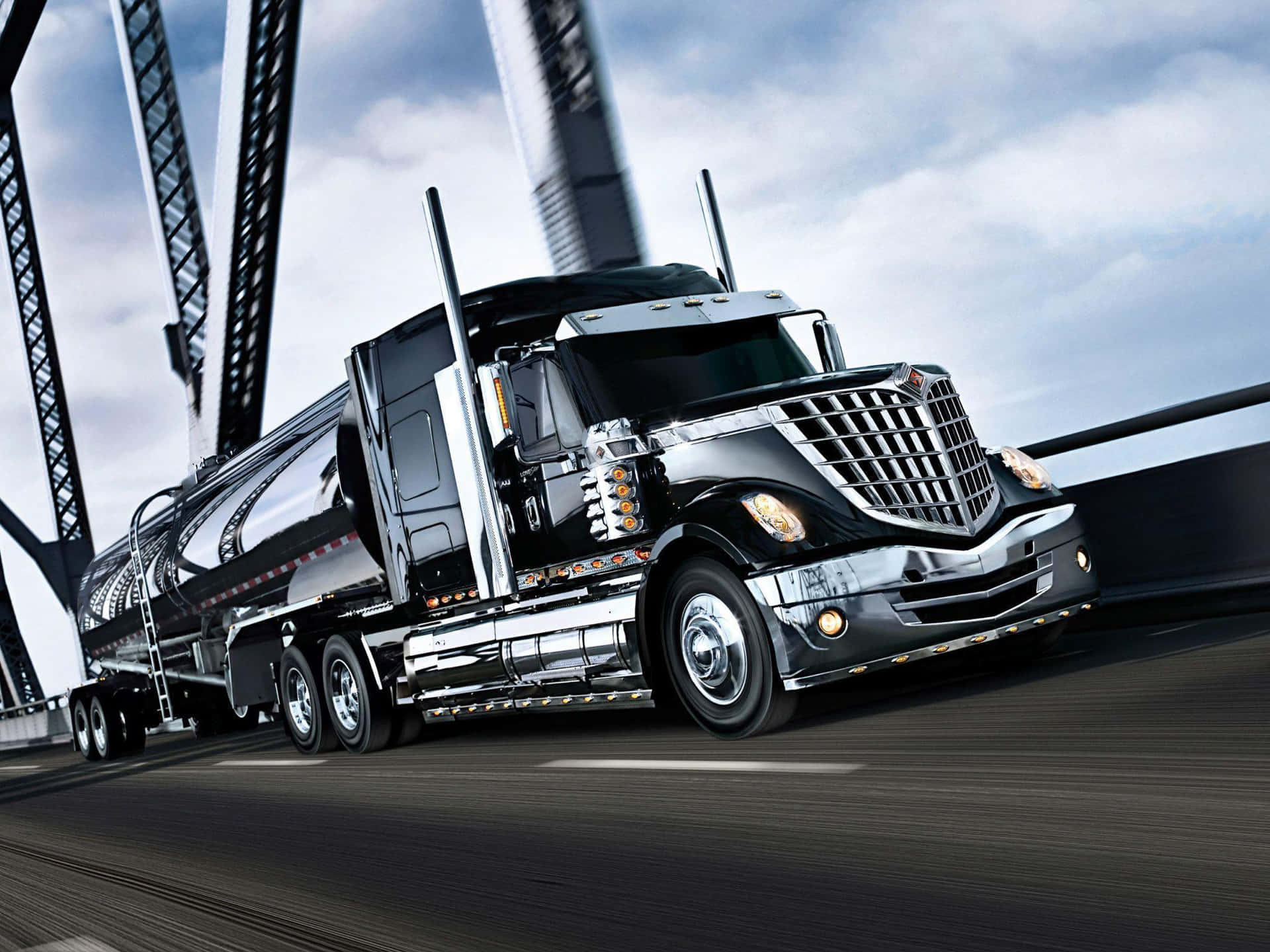Trucks With Service Bodies For Sale: Your Ultimate Guide to Finding the Perfect Workhorse pickup.truckstrend.com
In the world of trades, field service, and mobile operations, efficiency, organization, and security are not just buzzwords – they are critical components of success. For professionals who rely on transporting tools, parts, and equipment to various job sites, a standard pickup truck often falls short. This is where the specialized utility of trucks with service bodies for sale comes into play, transforming a basic vehicle into a mobile workshop. These purpose-built trucks are indispensable assets for plumbers, electricians, HVAC technicians, contractors, telecommunications specialists, and countless other mobile professionals, offering unparalleled convenience and productivity.
This comprehensive guide will delve deep into everything you need to know about trucks with service bodies for sale. From understanding their unique features and the myriad benefits they offer, to navigating the market, making an informed purchase, and ensuring the longevity of your investment, we’ll cover it all. Whether you’re a seasoned professional looking to upgrade your fleet or a budding entrepreneur seeking your first specialized vehicle, this article will equip you with the knowledge to make the best decision for your business.
Trucks With Service Bodies For Sale: Your Ultimate Guide to Finding the Perfect Workhorse
What Exactly is a Service Body Truck?
At its core, a truck with a service body, often interchangeably called a utility body or service utility truck, is a vehicle where the standard pickup truck bed has been replaced with a highly specialized, compartmentalized storage unit. Unlike a conventional truck bed that offers open space, a service body features a series of integrated, lockable compartments on the sides and sometimes at the rear, providing secure and organized storage for tools, equipment, and materials.
These compartments are typically accessible from the outside, allowing for quick retrieval of items without having to climb into the truck bed. Many service bodies also include a central open cargo area, often with a reinforced floor and tie-down points, suitable for larger items like ladders, pipes, or generators. They are built to withstand the rigors of daily commercial use, often constructed from heavy-gauge steel or lighter, corrosion-resistant aluminum.
Service bodies can be mounted on various truck chassis, ranging from light-duty pickup trucks (like Ford F-150/250, Ram 1500/2500, Chevrolet Silverado 1500/2500) to medium-duty and heavy-duty commercial chassis (like Ford F-350/450/550, Ram 3500/4500/5500, Chevy Silverado 3500/4500/5500). The choice of chassis largely depends on the weight of the equipment to be carried and the specific demands of the trade.
Why Choose a Truck with a Service Body? Unpacking the Benefits
The decision to invest in a truck with a service body is driven by a multitude of practical advantages that directly impact a professional’s bottom line and daily operations.
Organization & Efficiency
This is arguably the most significant benefit. Instead of loose tools rattling in a toolbox or equipment piled haphazardly, a service body provides dedicated, easily accessible compartments for everything. This systematic organization drastically reduces time spent searching for tools, allowing technicians to focus on the job at hand. Customizable shelving, drawers, and bins within the compartments further enhance this efficiency.

Enhanced Security
Valuable tools and equipment are a significant investment. Service bodies come equipped with robust, often automotive-grade, locking mechanisms on all compartments, providing superior security against theft compared to an open bed or even a truck cap. This peace of mind is invaluable, especially when leaving the truck on a job site overnight.
Professionalism & Image
A well-maintained and organized service truck projects an image of professionalism and reliability. Arriving at a client’s location with a clean, organized vehicle instills confidence and reinforces your commitment to quality service. It’s a mobile billboard for your business.
Durability & Longevity

Built for demanding work environments, service bodies are constructed from durable materials designed to withstand heavy loads, constant opening and closing, and exposure to the elements. Their robust construction often means they outlast standard pickup beds and can be transferred to a new chassis, extending their useful life.
Versatility & Customization
Service bodies are incredibly versatile. While standard configurations exist, they can be highly customized with features like ladder racks, pipe carriers, crane mounts, air compressors, generators, and even integrated power inverters. This adaptability makes them suitable for an incredibly wide range of specialized trades.
Optimized Payload Capacity
While they add weight, service bodies are designed to distribute heavy loads efficiently. When paired with the correct chassis, they allow professionals to carry a substantial amount of tools and materials safely and within the truck’s Gross Vehicle Weight Rating (GVWR).

Key Considerations When Buying a Service Body Truck
Purchasing a service body truck is a significant investment that requires careful consideration. Here are the crucial factors to weigh before making a decision:
Your Specific Trade & Equipment Needs
Start by making an inventory of all the tools, parts, and equipment you regularly carry. Consider their size, weight, and how often you access them. This will dictate the necessary compartment sizes, shelving configurations, and overall payload capacity. Do you need a ladder rack? A pipe carrier? An integrated air compressor?
Chassis Type & GVWR
The chassis (the truck’s frame, engine, transmission, etc.) must be appropriately matched to the weight of the service body itself, plus all your tools and equipment. Overloading a truck is dangerous and can lead to costly mechanical failures. Understand the truck’s Gross Vehicle Weight Rating (GVWR) and ensure your fully loaded setup remains well within its limits. Light-duty trucks are suitable for lighter loads, while medium and heavy-duty chassis are required for heavier equipment and specialized operations.
Body Material: Steel vs. Aluminum
- Steel Service Bodies: Generally more affordable, incredibly durable, and highly resistant to impact damage. However, they are heavier, which reduces payload capacity, and are susceptible to rust if not properly maintained.
- Aluminum Service Bodies: Lighter, which increases payload capacity and can improve fuel efficiency. They are corrosion-resistant and often have a longer lifespan in harsh climates. However, they are typically more expensive and can be more prone to denting than steel.
Compartment Layout & Customization
Look for a layout that maximizes your efficiency. Consider adjustable shelving, slide-out trays, drawer units, and whether the compartments are deep enough for your largest tools. Ensure the doors operate smoothly and seal tightly to protect contents from weather. Many service bodies can be customized with specific interior configurations or exterior accessories.
Security Features
Beyond basic locks, consider advanced security options like remote locking systems, alarm systems, and reinforced latches. The harder it is to break into, the safer your valuable equipment will be.
Condition (Especially for Used Trucks)
If considering a used service body truck, a thorough inspection is paramount.
- Service Body: Check for rust (especially on steel bodies), dents, bent panels, and proper alignment of doors. Ensure all latches and hinges work smoothly and that weather stripping is intact. Look inside compartments for signs of excessive wear or damage.
- Truck Chassis: Perform a comprehensive mechanical inspection. Check for fluid leaks, tire wear, brake condition, engine health, and transmission performance. Review the vehicle’s service history if available. A pre-purchase inspection by a trusted mechanic is highly recommended.
Budget
Your budget will significantly influence your options. New service body trucks can be a substantial investment, while used ones offer a more affordable entry point. Factor in not just the purchase price but also potential customization costs, ongoing maintenance, fuel, and insurance.
Navigating the Market: Where to Find Service Body Trucks For Sale
The market for service body trucks is diverse, offering various avenues to find the right vehicle for your needs.
- Commercial Truck Dealerships: These dealerships specialize in work vehicles and often have a dedicated section for new and used service body trucks. They can also facilitate custom orders and offer financing options.
- Online Marketplaces & Classifieds: Websites like CommercialTruckTrader.com, TruckPaper.com, eBay Motors, Craigslist, and Facebook Marketplace are excellent resources for both new and used service body trucks from various sellers, including private owners and smaller dealerships.
- Fleet Sales & Auctions: Large companies, utility providers, and government agencies regularly cycle out older fleet vehicles, which are often sold through public auctions or direct fleet sales. These can be excellent sources for well-maintained, albeit high-mileage, vehicles.
- Upfitters & Body Manufacturers: Companies that specialize in manufacturing and installing service bodies often sell directly or work with dealerships. They can provide expert advice on customization options.
- Private Sellers: While requiring more due diligence, purchasing from a private seller can sometimes yield a better deal, as there are no dealership markups.
Tips for Inspecting and Purchasing
Once you’ve identified potential candidates, follow these steps to ensure a wise purchase:
- Define Your Needs Clearly: Before you even start looking, list out your absolute must-haves and nice-to-haves.
- Thorough Visual Inspection:
- Exterior: Walk around the entire truck. Look for rust, major dents, or signs of collision repair. Check the tires for even wear and adequate tread.
- Service Body: Open and close every compartment. Ensure latches work, doors align properly, and weather seals are intact. Look inside for custom shelving, drawers, and any signs of damage or excessive wear. Check the condition of the cargo area floor.
- Underneath: Inspect the frame for rust, cracks, or bends. Check suspension components.
- Mechanical Check:
- Fluids: Check oil, transmission fluid, brake fluid, and coolant levels and condition.
- Engine & Transmission: Listen for unusual noises during start-up and operation.
- Brakes: Check brake pedal feel and listen for grinding or squealing.
- Lights & Electrical: Test all exterior and interior lights, turn signals, and accessories.
- Test Drive: Drive the truck on various road types. Pay attention to steering, braking, acceleration, and transmission shifting. Listen for any strange noises, vibrations, or pulling.
- Review Documentation: Verify the vehicle’s title is clear. Ask for service records to understand its maintenance history. Run a VIN check (e.g., Carfax or AutoCheck) to uncover accident history, previous owners, and mileage discrepancies.
- Pre-Purchase Inspection (PPI): For used trucks, this is non-negotiable. Have an independent, qualified mechanic inspect the vehicle before purchase. They can identify issues you might miss.
- Negotiate: Don’t be afraid to negotiate the price, especially if you’ve identified any issues during your inspection.
Maintaining Your Investment: Tips for Longevity
A service body truck is a workhorse, and like any valuable asset, it requires regular maintenance to ensure a long and productive life.
- Routine Chassis Maintenance: Follow the manufacturer’s recommended service schedule for the truck’s engine, transmission, brakes, and suspension. This includes oil changes, fluid checks, tire rotations, and general tune-ups.
- Service Body Care:
- Lubricate Hinges and Latches: Regularly apply a dry lubricant to keep compartments opening and closing smoothly and prevent wear.
- Check Seals: Inspect weather stripping around doors and replace any that are cracked or worn to prevent water intrusion.
- Rust Prevention: For steel bodies, promptly address any scratches or chips in the paint to prevent rust. Consider applying rust-inhibiting coatings.
- Cleanliness: Regularly clean the interior and exterior of the service body to prevent dirt and grime buildup that can lead to corrosion.
- Proper Loading: Always distribute weight evenly within the compartments and cargo area, staying within the truck’s GVWR. Overloading or uneven loading can stress the chassis and service body.
- Secure Tools: Ensure all tools and equipment are properly secured within compartments or the cargo area to prevent shifting during transit, which can cause damage to the body or the items themselves.
Estimated Price Ranges for Trucks with Service Bodies
The cost of a truck with a service body varies significantly based on factors such as the truck’s make, model, year, mileage, condition, the service body’s material (steel vs. aluminum), size, features, and customization. The table below provides estimated price ranges to give you a general idea.
| Category | Typical Chassis Examples | Service Body Type & Features | Estimated Price Range (USD) | Key Influencing Factors |
|---|---|---|---|---|
| Used Light-Duty | Ford F-150/250, Ram 1500/2500, Chevy Silverado 1500/2500 | Basic to Standard Steel/Aluminum Body, 100k+ miles, older model year | $15,000 – $35,000 | Mileage, age, condition of truck and body, basic features, rust presence. |
| New Light-Duty | Ford F-150/250, Ram 1500/2500, Chevy Silverado 1500/2500 | Standard Steel/Aluminum Body, new truck chassis, warranty | $40,000 – $70,000+ | Truck model, engine, transmission, service body material, compartment layout, basic accessories. |
| Used Medium-Duty | Ford F-350/450, Ram 3500/4500, Chevy Silverado 3500/4500 | Standard to Heavy-Duty Steel/Aluminum Body, 70k+ miles, good condition | $25,000 – $55,000 | Higher payload capacity, more robust construction, mileage, prior use (e.g., utility vs. general contractor), specialized features. |
| New Medium-Duty | Ford F-350/450/550, Ram 3500/4500/5500, Chevy 3500/4500/5500 | Heavy-Duty Steel/Aluminum Body, brand new chassis, warranty | $60,000 – $100,000+ | Truck class, engine type (gas/diesel), transmission, advanced service body features (e.g., crane prep, integrated power), custom shelving. |
| Highly Customized/Specialized New | Ford F-550, Ram 5500, International, Freightliner | Custom-built for specific trades (e.g., telecom, sign repair, emergency services), advanced hydraulics, integrated generators/compressors, ladder racks | $80,000 – $150,000+ | Extensive customization, specialized equipment integration, heavier-duty chassis, advanced safety features, premium materials. |
Note: These prices are estimates and can fluctuate based on market demand, regional differences, and specific dealer incentives. Always get multiple quotes and thoroughly inspect any vehicle before purchase.
Frequently Asked Questions (FAQ)
Q1: What’s the difference between a service body and a utility body?
A1: The terms "service body" and "utility body" are generally used interchangeably to describe the same type of compartmentalized truck bed. Some manufacturers or regions might prefer one term over the other, but they refer to the same functional concept.
Q2: Can I put a service body on any truck chassis?
A2: No. The service body must be compatible with the truck’s chassis length (cab-to-axle measurement), Gross Vehicle Weight Rating (GVWR), and frame strength. It’s crucial to ensure the service body’s weight, plus your anticipated payload, does not exceed the chassis’s capabilities. Consult with an upfitter or dealer for compatibility.
Q3: Are aluminum service bodies better than steel?
A3: Neither is definitively "better"; it depends on your needs. Aluminum bodies are lighter, increasing payload capacity and potentially fuel efficiency, and they are corrosion-resistant. However, they are typically more expensive and can be more susceptible to denting. Steel bodies are more affordable, extremely durable against impact, but heavier and prone to rust if not maintained.
Q4: What’s the typical lifespan of a service body truck?
A4: The service body itself can last 15-20 years or more with proper maintenance, often outliving the original truck chassis. The lifespan of the truck chassis depends on its make, model, maintenance, and usage, typically ranging from 200,000 to 400,000+ miles for well-maintained commercial vehicles.
Q5: Is it worth buying a used service body truck?
A5: Absolutely, if you perform a thorough inspection and due diligence. Used service body trucks offer significant cost savings and can be an excellent value, especially for startups or those with a tighter budget. Just be extra diligent about checking for rust, mechanical issues, and the overall condition of both the truck and the service body.
Q6: How much does a custom service body cost?
A6: A custom service body can range from an additional few thousand dollars for minor modifications to a standard body, up to tens of thousands (or even over $100,000) for highly specialized, purpose-built bodies with integrated equipment (like cranes, specialized shelving, or power systems). The cost is driven by material, size, complexity, and the specific features requested.
Conclusion
Trucks with service bodies are more than just vehicles; they are mobile command centers, workshops on wheels, and indispensable partners for professionals across countless industries. Their ability to enhance organization, provide security, boost efficiency, and project a professional image makes them a cornerstone of modern field service operations.
Investing in a truck with a service body is a strategic decision that can significantly impact your productivity, profitability, and professional reputation. By carefully assessing your specific needs, understanding the various options available, diligently inspecting potential purchases, and committing to regular maintenance, you can acquire a powerful asset that will serve your business reliably for years to come. Choose wisely, and watch your mobile operations reach new heights of efficiency and success.



